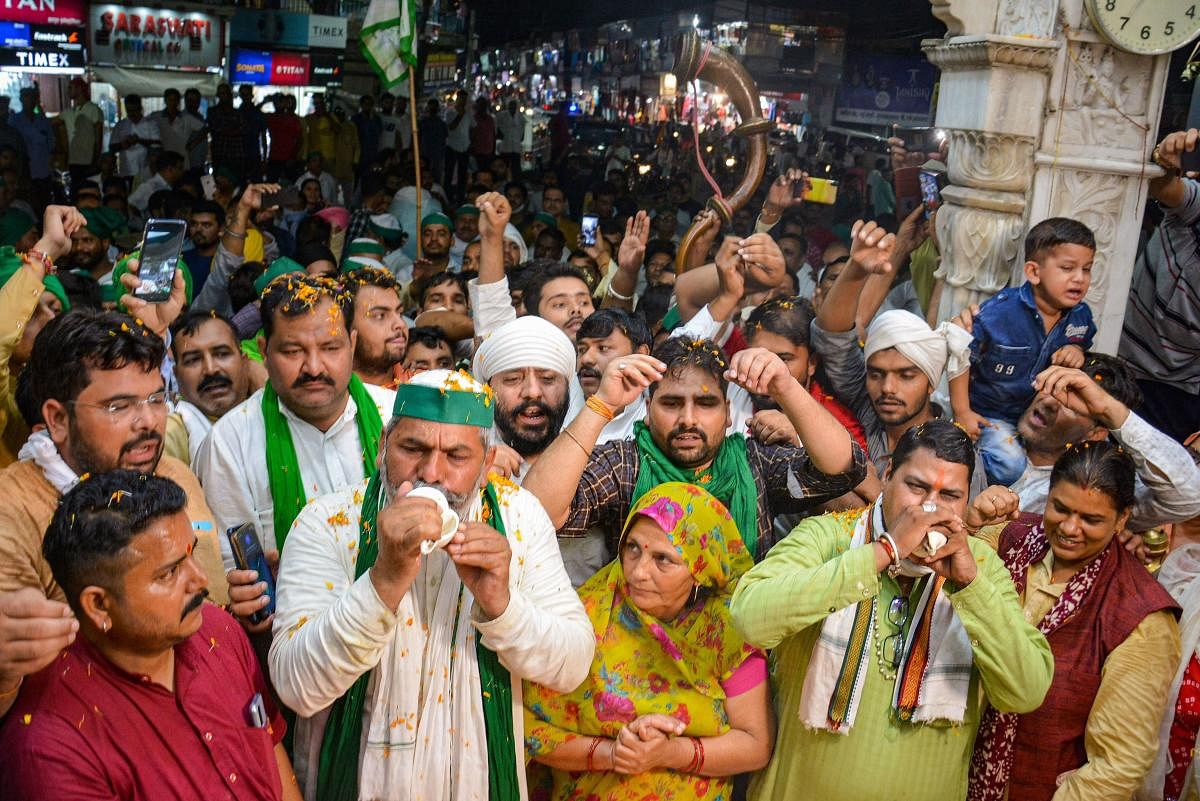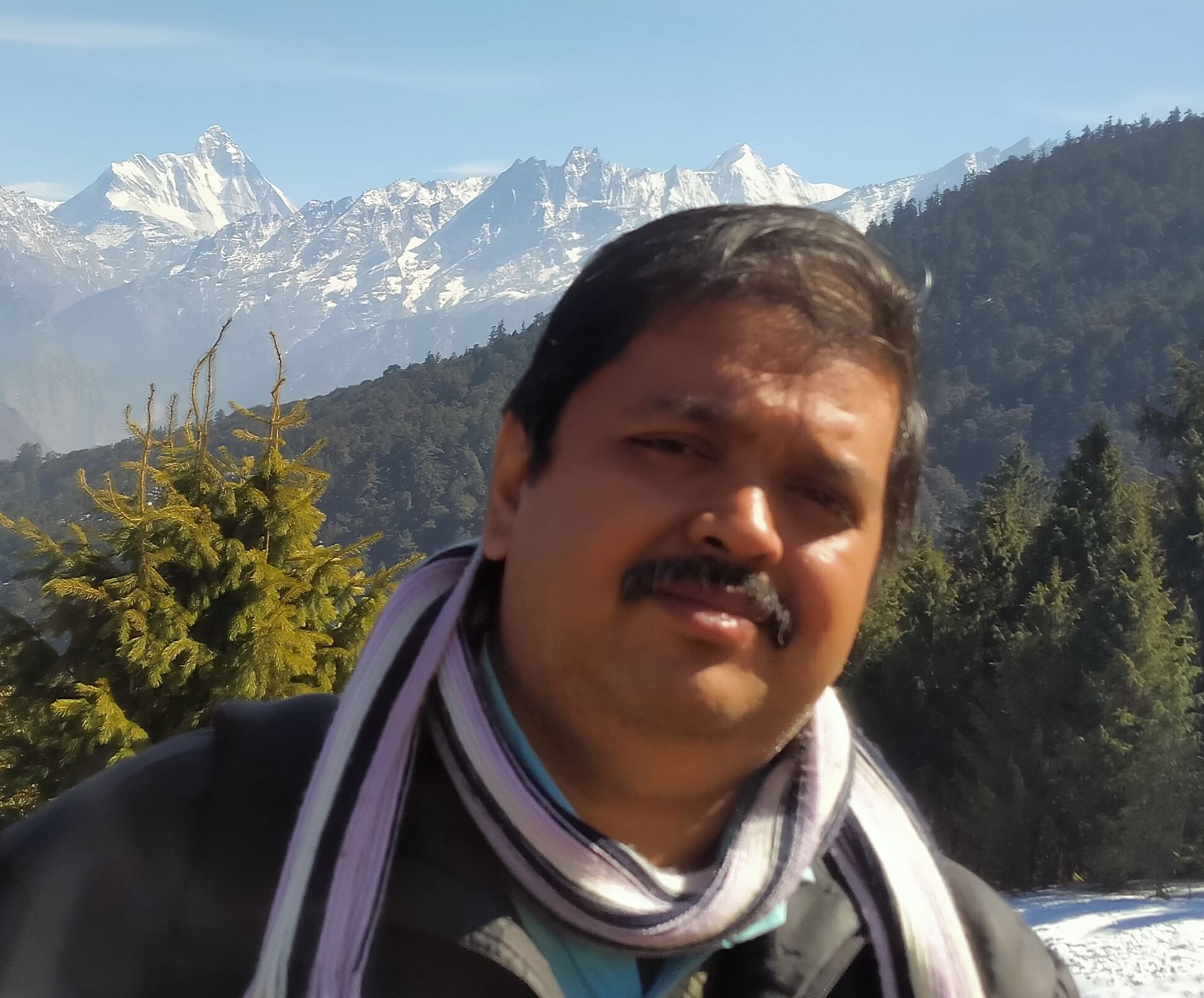
It has been more than 10 months since a group of farmers’ organisations started their protest on the borders of the national capital against the three farm laws passed by Parliament in September last.
Over the past few months, however, the farmers’ refrain has gradually shifted from demanding a rollback of the farm laws and making minimum support price for farm produce the law to defeating the BJP and its allies in the upcoming elections. Perhaps they have come to the conclusion that their demands won’t be fulfilled if the BJP continues in power.
The change in the narrative of the farmers’ leaders is indicative of attempts to shift the battleground from the Singhu, Tikri and Ghazipur borders of the national capital to that of electoral politics, without actually taking a political plunge themselves.
Farmers’ leaders at the recent Kisan Mahapanchayat in Muzaffarnagar in western Uttar Pradesh spoke of defeating Chief Minister Yogi Adityanath in the UP elections next year and Prime Minister Narendra Modi in 2024, without indicating whether they would themselves jump into the fray to do so.
A section of farmers’ leaders, such as Gurnam Singh Chaduni of the Haryana chapter of the Bhartiya Kisan Union, exhorted other leaders attending the Muzzaffarnagar meeting to contest elections to ensure the “real welfare” of farmers.
Chaduni had contested elections in the past from the Ladwa Assembly seat in Haryana and lost his security deposit, finishing seventh. He is now keen to test the electoral waters in Punjab.
Rakesh Tikait, the son of veteran farmers’ leader late Mahendra Singh Tikait, had contested the Assembly polls in UP on the Bhartiya Kisan Dal ticket and lost miserably. He had tried his luck again in the 2014 Lok Sabha elections as a Rashtriya Lok Dal candidate but failed to garner even 10,000 votes.
Since emerging as the face of the farmers’ agitation after the January 26 violence at the Red Fort, Tikait has been insisting that he is not interested in contesting elections and would remain apolitical.
The political ambitions of some farmers’ leaders have caused unease within the Samyukta Kisan Morcha (SKM), the conglomeration of farmers’ organisations leading the protests, which is keen to keep the agitation apolitical and retain the moral high ground.
With elections due in Punjab and UP, the SKM’s 40-plus groups are debating amongst themselves their approach to electoral politics. The SKM has also widened the attack on the Modi government, criticising its policies such as the National Monetisation Pipeline, disinvestment, besides issuing statements on every other major issue dominating the headlines.
Like the anti-corruption agitation in 2011, with Anna Hazare as the figurehead, during the Congress-led UPA government, the SKM, too, has declared its intent to oust the ruling dispensation. Like the Anna movement, the SKM, too, has received support from a large section of opposition parties.
But the similarities between the two agitations end there. The anti-corruption agitation during the UPA years had a strong organiser in Arvind Kejriwal, who managed to create a strong buzz across the country against corruption by effectively rallying the media against the then ruling Congress.
The farmers’ agitation, despite claims of a national footprint, has found resonance largely in Punjab, Haryana and western UP. It lacks a clear leader and the diverse group of 40 leaders of farmers’ unions largely confined to some districts in each of the three states appear to pull in different directions.
The selective protests against the lathi-charge on farmers in Haryana, by staging a sit-in in Karnal, that led to violent clashes with the police, and the muted response to similar action in Congress-ruled Punjab, too, had caused some disquiet within the SKM.
The farmers’ organisations are resolute in their objective to overthrow the BJP governments in Uttar Pradesh, Haryana and at the Centre, and appear ambiguous when it comes to extending support to Congress in Punjab. They have not presented an alternative vision that they would like to see implemented if the BJP is ousted from power, which could prove to be a handicap when it campaigns against the saffron party.
In the states where caste plays an important role in voting patterns in elections, the Congress, too, appears keen to endear itself to the Scheduled Caste voters by highlighting the “first Dalit Chief Minister of North India” in Punjab’s Charanjit Singh Channi, hoping to benefit from the move in Uttarakhand and UP.
Moreover, the farmers’ issue has so far seemed to resonate more in western UP than in the rest of the state. The BJP’s attempts to reach out to voters with a religious message of the Ram Temple, the return to power of Taliban in Afghanistan and the threat it poses to India, appears to have a stronger appeal in UP.
The BJP, too, has been guarded in responding to the farmers’ sustained attack on them by arguing that they also believe that the farmers should not go empty-handed from their agitation sites.
If the farmers’ leaders decide to take the political plunge, they may find themselves pitted against the same section of opposition parties who are supporting them rhetorically but may be unwilling to cede political space to them.
Will the farmers’ leaders be able to script a success story like Kejriwal’s AAP? Will they be able to field virtual nobodies in the elections and ensure their win? Or will the agitation gradually fade away after the UP elections? We will know in the next few months.
